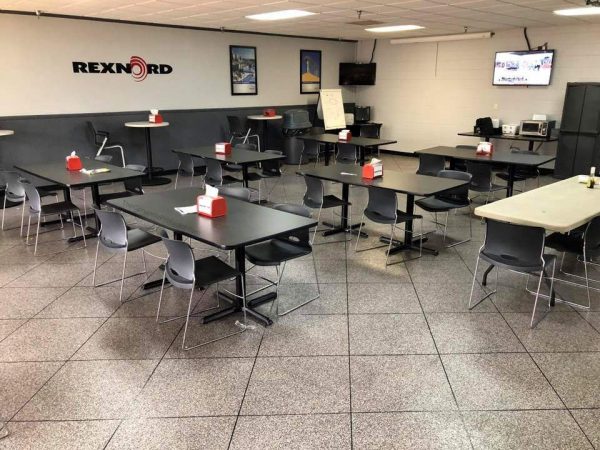If you’re like most homeowners, the dream vision of your basement space and its current reality are two different things. While you’ve got the square footage for that kid-friendly play area, workout spot, or stackable storage setup, concerns over water damage, mold infestation, insulation, and cost have you hesitant to do any upgrades. Perhaps the answer to your situation is epoxy flooring.
And you’re not alone, which is why more people are taking advantage of a secret design element borrowed from industrial fields. Epoxy flooring — commonly found in hospitals, laboratories, and auto body shops — is available for residential use, and it comes in a surprising array of colors and finishes.
What is epoxy flooring?
Epoxy is a product comprised of two distinct components that, when chemically catalyzed, thermoset into a durable flooring surface. The first element, resin, gives epoxy its unique finish character and color depth. The second, polyamide hardener, lends indomitable strength. As a result, epoxy does not dry like paint. Instead, it cures to create a crosslink of polymer structures.
Did you think that epoxy was a paint? You’re not far off. Many manufacturers offer do-it-yourself (DIY) versions of epoxy finish that contain some resin and a sold-separately catalyst. However, these products are single-process only and not nearly as effective as the real deal.

What is the cost difference?
As a commercial-grade flooring material, epoxy costs about the same as pre-finished wood planks. On average, you’ll spend 30 to 40 percent less than various low-pile carpeting options and 50 to 70 percent less than ceramic tiles over time.
It pays to ensure you prep your floor for installation. This step may add to your renovation timeline and budget, but the results offer a high-end look that’s not only long-lasting, but also adds value to your home.

What are the benefits of epoxy flooring?
When you stop and take a critical look at the wear and tear any family basement can expect to withstand, it’s not hard to see why traditional industrial flooring may be a feasible option.
Consider the following benefits of epoxy flooring:
- Features easy-to-clean surface: Epoxy’s non-porous finish provides a highly resistant coating to mud, salt, dust, and dirt.
- Offers insulation: Professionally installed epoxy floors form a smooth seal against foundation walls, which enhances insulation efficiency.
- Delivers a watertight seal: If water doesn’t penetrate out of epoxy floors, ground and rainwater — along with the resulting possibility of mold damage — can’t leak in!
- Provides a durable build: Epoxy’s unique, sturdy character renders it highly resistant to wear and tear, plus it assures a long lifespan.
- Preserves the subfloor: Epoxy’s hard surface is well-suited to protect and preserve exposed foundation concrete, which helps maintain an efficient water vapor barrier.
- Creates a slip-resistant surface: Some varieties of epoxy flooring contain alternate layers of polymer flakes, which form a slip-resistant surface.
- Decreases energy use: Other varieties present a high-gloss finish that reflects light, adding design appeal and increased light reflectance value (LRV). High LRVs reduce energy usage overall and increase the productivity of selected bulbs.
- Includes attractive surface: Epoxy finishes include clear coating and metal flaking. A wide range of colors is available too, including cool ice blue and terra cotta to match your home’s unique design.
With the numerous benefits of epoxy flooring, its popularity is understandable.

What are the potential drawbacks of epoxy flooring?
Epoxy floor application requires specific attention to moisture, temperature, and airflow issues. Proactive subfloor preparation is vital, as is the delicate mixing of reactive compounds. Once an epoxy floor cures, common problems such as surface bubbling, blistering, and crater formation, peeling, uneven finish, and topcoat lumps are almost impossible to touch up.
As a result, far too many DIY warriors end up wasting valuable time and resources trying to save upfront costs on installation. Given the long-term benefits of properly installed epoxy flooring, be sure to include professional quotes in your budget analysis.
After all, the secret is out, and many contractors and companies are offering epoxy services to residential areas. So, go ahead and up the ante on those dream visions of yours with epoxy flooring for your basement!








